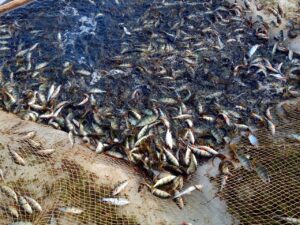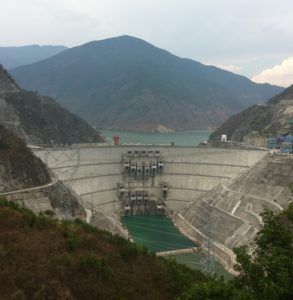Urban coastal centers are facing unprecedented social, economic and structural risks due to the impacts of climate change. The combination of people migrating from drought affected geographies to coastal cities already facing ocean driven damage to infrastructure due to rising sea levels, increased intensity of storms, and the loss of habitats for fisheries puts developing coastal nations at the epicenter of new security threats.
The Stimson Center’s Environmental Security program, with support from global (re)insurer XL Catlin, is creating a predictive mapping model that will help identify the developing coastal nations that are most at risk from climate change. The model will help better predict the hazards and identify where resilience measures should be implemented in those regions most vulnerable to these changes.
“Coastal cities are already under incredible social stress in developing nations, while climate change and ocean related risk is further exacerbating the economic and food security for people living in these dense urban centers. The combination of migrants seeking better livelihoods in cities also under assault from flooding and loss of basic services due to sea level rise and coastal storms, is pushing many local governments to the brink”, says Sally Yozell, Director of the Stimson Center’s Environmental Security program. “Many urban areas that lack strong governance structures are just one catastrophic event away from disaster.”
The mapping model will examine social, environmental, and economic conditions in a region. This will allow the model to identify the nations most at risk of conflict and insecurity due to climate change.
“The predictive model will account for a host of factors such as poor governance, depleted fisheries, and changing ecosystems,” says Yozell. “Accounting for these complexities will give nations and businesses the tools they need to manage risk.”
Along with the mapping model, a checklist will be created for businesses for future operations in climate change hotspots. Further, governments and industry will be engaged and provided with tools to help identify solutions and take actions necessary to mitigate climate change risks.
“When public policy aligns with business interests we can better mitigate risk,” says XL Catlin’s Executive Vice President, Emerging Markets, Brendan Plessis. “This multi-sectoral approach is key to delivering real change in communities that need it most and we’re proud to be working with the Stimson Center to achieve these aims.”
Beginning with a focus on the Western Hemisphere and Southeast Asia, over the next two years, the Stimson Center’s Environmental Security program will conduct research and build the tools to help governments and businesses predict and manage risks due to climate change. Further areas may be included as new partners are confirmed. The predictive mapping model, business checklist, and other tools and reports will be launched at the Our Oceans Conference 2019 in Norway.



